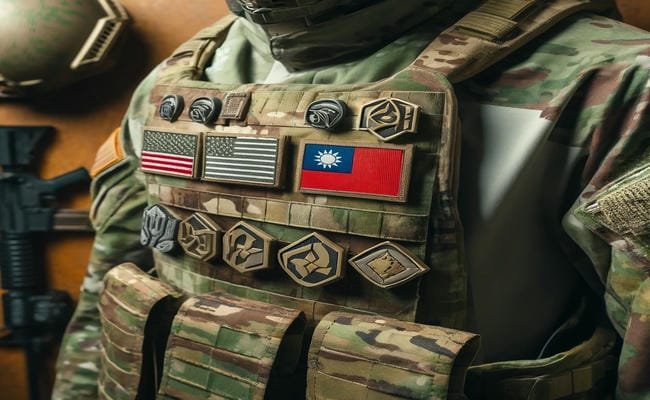
How To Take Billing Info Off Of Crainyon
January 23, 2025
How To Talk To A Real Person At Sce Reddit
January 23, 2025Understanding how to properly interpret and apply Taiwan Army camouflage symbols is essential for military enthusiasts, professionals, or researchers studying tactical gear, uniforms, and strategic markings. These symbols serve specific purposes, ranging from identifying units to indicating operational roles and enhancing concealment in diverse environments. This guide will walk you through the correct way to understand and utilize these symbols.
Why Are Camouflage Symbols Important?
- Tactical Identification: Distinguish between different units, ranks, or operational roles.
- Operational Efficiency: Ensure symbols are correctly applied for field recognition and communication.
- Cultural Significance: Reflect Taiwan’s military heritage, structure, and tactical approach.
- Enhanced Concealment: Integrate symbols effectively into camouflage patterns for optimal field performance.
Tools You’ll Need
- Reference materials on Taiwan’s military insignia
- Access to camouflage gear or uniforms
- Basic knowledge of military symbology
- High-resolution images for accurate identification
Steps to Take on Taiwan Army Camouflage Symbols Correctly
1. Understand the Basic Symbol Categories
Taiwan Army camouflage symbols generally fall into these categories:
- Unit Identification Symbols: Represent specific divisions, brigades, or battalions.
- Operational Role Symbols: Indicate functions like infantry, armor, artillery, logistics, or medical support.
- Rank Insignia: Display military ranks from enlisted soldiers to high-ranking officers.
- Special Forces Symbols: Unique badges for elite units like airborne, amphibious, or reconnaissance forces.
2. Research Official Guidelines
- Refer to Taiwan’s Ministry of National Defense (MND) publications or military manuals.
- Look for diagrams that explain the placement, size, and meaning of each symbol.
- Study historical changes, as symbol designs may evolve with military reforms.
3. Correct Placement of Camouflage Symbols
- Uniform Placement:
- Shoulder patches typically display unit insignia.
- Chest or upper sleeve areas often feature rank insignia.
- Field Gear Application:
- Tactical vests, helmets, and backpacks may have symbols for quick identification in combat.
- Use subdued colors to maintain camouflage effectiveness while ensuring visibility to allied forces.
4. Recognize Color Codes and Patterns
- Standard Color Codes:
- Green, brown, and black are common in Taiwan’s woodland camouflage patterns.
- Desert or urban operations may use lighter, sand-based tones.
- Contrast Balance:
- Symbols should not compromise the camouflage’s ability to blend with the environment.
- Use low-contrast designs for covert operations.
5. Apply Symbols with Precision
- For authenticity, replicate the exact size, proportion, and alignment of the symbols.
- Use fabric-safe paint, embroidery, or patches depending on the uniform material.
- Ensure symbols are securely fastened, especially on field equipment, to withstand rigorous conditions.
Tips for Proper Symbol Usage
- Verify Authenticity: Always cross-check with official military references to avoid misrepresentation.
- Respect Military Regulations: Ensure proper use, especially if worn in formal or reenactment contexts.
- Avoid Unauthorized Symbols: Using restricted military insignia without permission may lead to legal or cultural issues.
Troubleshooting Common Issues
- Symbols Fading Over Time?
- Use high-quality materials resistant to weather and washing.
- Reapply paint or replace patches as needed.
- Incorrect Placement?
- Refer back to official uniform guidelines.
- Consult military personnel if unsure about positioning.
- Misidentification in Reenactments?
- Study military history and engage with veterans or military forums for accuracy.
Also Read: How To Take Billing Info Off Of Crainyon
Conclusion
Taking on Taiwan Army camouflage symbols correctly requires attention to detail, respect for military protocols, and an understanding of their tactical and cultural significance. Whether for professional purposes, research, or historical reenactments, following these guidelines ensures accuracy and authenticity.




